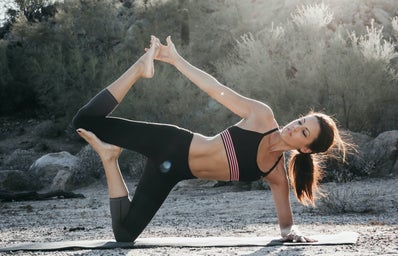Gym memberships are roughly split 50-50 between men and women. However, despite the influx of women flooding gyms in recent years, there is still an institutional misogyny that plagues the industry. Gyms are often built with men in mind and cater to their fitness goals. Many weight and cardio machines are built taller and wider than the average woman. For many women this can be incredibly frustrating because it can hinder them from reaching their fitness goals, and in some cases can cause injury.
“I do have a hard time using the machines. Even when I change it to the settings for the shortest people it’s still not good enough. Some of the machines look like it can be adjusted to as low as 5’2” and I’m 5’0″. I’m not able use some of the machines properly because of it. I can’t properly execute the moves without being uncomfortable. And doing some exercises with the wrong stances/positions/etc. causes injury. Like this one machine that targets abs, my feet don’t touch the ground. I have to reach with my toes to touch the ground and in turn I get knee pain from a machine that is only supposed to be focused on abs. I have to reach more, and it sucks ‘cus like I said I’m not getting the full benefit of the machines ‘cus I’m struggling to maintain the correct posture. I’m at a disadvantage for being short. So I look for other ways to do body resistance training. I go to HIIT workouts or cardio/light weights. I’ve gotten hurt by machines ‘cus of my shortness,” Mariela Caldera, a recent graduate from Eastern Oregon University, shared about her experience at gyms.
The disparity between the size of the machines compared to most women and the male dominated culture that inhabits most gyms are major contributing factors to women forfeiting their membership. Women account for 14% of membership cancelation while only 8% of men cancel theirs (Wellness Creatives, 2019.)
“I don’t go to the gym anymore, because of how large everything is. It’s just too hard to work out,” Wenyi Cheu, a veterinary technician from Salt Lake City, commented.
Gyms aren’t the only institutions that are built around men. For example, the US government did not adequately test the impact of a car crash on a female dummy until 2012. Prior to that, crash test dummies were modeled after the average 50th percentile male body. Building structures based on only 50% of the population is dangerous. Especially in a place like a gym where injuries frequently occur.
“I’ve pulled muscles in my neck … while using a lat pulldown too many times to count,” Sydney Pons, a pharmacist at LDS Hospital, explained.
Thousands of people are injured due to faulty gym equipment annually. Many of these are women who are victims due to the negligence of exercise machine manufacturers. However, gyms require members to sign liability waivers that ensure that patrons will not sue gym owners and management because of such injuries. Perhaps if these complaints were to go to court, manufacturers would begin to take women into account when designing their products.
Image: 1


